Trying to Break out of the Olympic “Bubble”
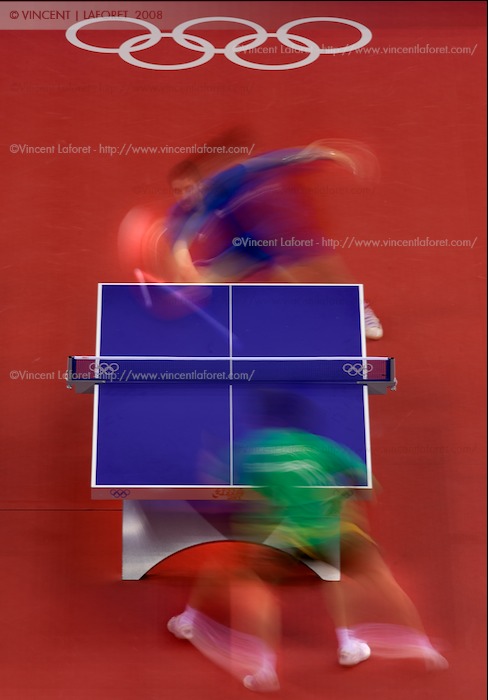
Tsuboi Gustavo of Brazil (bottom) and Peter-Paul Pradeeban of Canada playing table tennis in this long exposure from overhead. Photograph by Vincent Laforet for NEWSWEEK
I think that I was followed by the secret police in an unmarked car today outside of Beijing…but you’ll have to read through to the end to get to that part of the story. Instead I’m going to take you through my day in chronological order.
The day started rather uneventfully as I did my due diligence and covered at least one sporting event–but I was itching the entire time to get out of the Olympic venues to see a little bit of China and to share that angle of this Olympic story with you. Little did I know that it might have been a better idea to stay “clean” and inside the bubble–the artificial barrier that keeps the journalists well contained within its boundaries and away from the real world and any potential trouble.
I began the day by spending 3-4 hours at the table tennis venue, and almost immediately I wanted to run out of there. The sport is incredibly quick, difficult to follow, and once again the backgrounds were incredibly cluttered. Not to mention that I had never covered table tennis, and my desire to learn yet another new sport was significantly hampered by the dark lines under my eyes. I’m finally starting to hit a bit of a wall here-as most others are. No matter how much sleep I try to fit in, I just can’t quite feel altogether rested. It’s not uncommon to see half or two-thirds of the bus asleep on any given ride, or volunteers passed out on the lunch tables at most of the venues. That’s something I’m going to keep more of an eye out for in the upcoming days.
My first image involved going overhead for a long exposure with a 300mm. Of course this was a broadcast position, and we weren’t allow to be there even though there wasn’t a single video camera present. But I’ve learned how to work the system to my favor now by using China’s bureaucracy against itself. When the BOB (Beijing Olympic Broadcaster) official came to ask me to leave, I asked to speak to a photo volunteer as they technically have no authority to ask me to move. That took 10 minutes. Then, when the volunteer came up, I escalated it to the assistant photo venue manager, all the while being cordial and polite. That took a good 5 minutes. When the assistant photo venue manager arrived, she did not ask me to move, but instead asked if I had all of the proper remote paperwork and releases from the overall photo manager. I responded that I did and that in turn took them 15 minutes to confirm with the main photo desk via the phone (they were trying to get me to move on a technicality themselves–this is all a big game of chess–in hopes that I did not have the proper paperwork and requests filed…but to their chagrin I did have everything in order.) I must admit that at this point, I was having a little internal triumphal moment, seeing how the endless paperwork jam could for once work in my favor. And when the venue photo manager arrived to confirm that I was approved to mount a remote–but just not on this BOB spot, which happened to be the only head on spot of the main table tennis of course–I very professionally agreed to move, even though he agreed that it was ridiculous for me not to be able to shoot from an empty position, simply because BOB had “paid” to reserve the position.
The point is, I had gotten a full 30 minutes of shooting in, without breaking a single rule (well, technically I did by standing there) but I also never upset anyone or acted in any way impolitely to anyone–there were smiles all around throughout the entire process–and I got my picture. What could be better?
When I got back to shooting from ground level, I discovered that photographing table tennis was similar to covering real tennis–it’s incredibly difficult at first, quite frustrating, but once you learn to study and dissect the sport it actually starts to become rather predictable. The athletes tend to line up at the exact same spot after each rotation and you can adjust your shooting accordingly. Just as you try to frame the perfect serve, the same can be done for these guys on a smaller scale–it’s almost literally a miniature version of the big game. Below is France’s Patrick Chila–the entire time I was studying his sever trying to get the ball positioned just right. I finally got my clown face picture, and pretty much full frame with a 400m at 2.8. Once I did, I knew I had carte blanche to go out and explore the world outside of sports for a bit.

France's Patrick Chila serving against Janos Jacob, who he defeated, in table tennis. Photograph by Vincent Laforet for NEWSWEEK
The first picture I took outdoors was just adjacent to the Main Press Center–not quite out of the bubble yet, but I very much like the graphic nature of this simple photograph. Here are two volunteers playing a game of badminton in front of a large air conditioning vent. I like the way that all of the lines work together, and that they too–like all of us here–are fenced in.
Below is a quick shot of the typical bubble street scene. These are fans walking past the gymnastics venue, right outside of the MPC.
I then got onto the bus back to my hotel. Instead of fighting the fact that the only part of Beijing that I’ve been able to see on a daily basis was through the window of the media shuttle, I decided to embrace it. I’ll keep shooting these over the next few days, and I think it just might make for a nice little series of “pictures from the media bus window.”
Here is a typical intersection shot from the bus as well.
Then I made this frame–and I very much like it. First, it proves that dogs do indeed exist in Beijing…seriously, it shows a typical street scene of an impromptu dog park in the middle of a modern high-rise neighborhood. Notice the Humvee with satellite dish in the right background as well. If you look carefully at the top of the frame, you can also see a giant TV monitor on the top of the frame with video of one of the Chinese Olympic gymnasts being broadcast live. Making a good frame while moving at 15-30 miles an hour can be challenging. You can’t quite think about your composition beforehand, and there is no asking the driver to slow down or go in reverse… but that’s part of the challenge behind these pictures.
OK–so here comes the part with the secret police. As the end of the day approached, I called a friend Zach Honig who has been publishing a blog from here for well over a month, and asked if he could help me arrange a translator and to have a taxi drive us outside of Beijing. My intent was rather innocent–I simply wanted to make an image of a more rural area with people watching the Olympics on TV.
Trying to get this concept through to the translator and cab driver proved incredibly difficult. At first they dropped us off in a tourist area with no sign of any neighborhood or people. We had to tell them time and time again that the point of this venture was to move away from the newly built Beijing–to show what most of China really looks like. After close to an hour, we finally pulled in to the small village of Chang Ping just off of the Badaling Expressway.
It was tough to blend in, and that’s an understatement. People would shut their doors as we approached, and kids would scurry away. There were few smiles, and my hellos and kind waves were rarely returned. At times it felt very very awkward–for both sides, I’m sure. People here live in fear of foreigners that they don’t know, let alone photographers. We could find no one that would let us into their homes–or who could even understand what we were doing. This isn’t the first time I have done this. It’s always difficult to blend in, especially in a country with a history of fearing the media–let alone the foreign media–and I patiently let things roll in the hope that something would eventually pan out. In the past I have always been able to succeed in being invited in by others in and around Beijing and Shanghai, in both modern and rural areas with few problems. But I think that the Chinese government has made it plain to everybody out there that they must put on the very best of appearances to the foreign world. People here seem frightened of showing us the “wrong” image, I think.
After more than 20 minutes of walking around without a single picture to show for it, we finally ran into a man on a moped who was wearing a “volunteer” shirt, which seemed odd at the time–but I didn’t catch onto the full significance of what he was wearing until later. I thought I was just lucky–but in hindsight someone had clearly called him and he had rushed to our “assistance” on his moped (in my opinion, of course). This was confirmed when a second volunteer showed up wearing an identical shirt minutes later. They were rather quite helpful to be honest, and one invited us to photograph a couple in their home.
The problem for me was that this scene and situation felt posed and too construed. The man put on his shirt and his wife started to clean up the place–and I had to beg them to leave everything the way it had originally been before I had come into their lives. Luckily, they either understood,or thought that they should comply–I’m not sure which. At this point there was a crowd of 10 people outside of their home, and I felt like I was on an Annie Leibowitz shoot with an entire production crew outside. This did not feel like photojournalism to me anymore.
We went to a few other houses – but it was clear we were only being invited to the “modern” or more presentable homes. I did catch a glimpse of a “real” family, with two babies and a small boy in a very very small room–but it turned out that they could not afford the channel that transmitted the Olympic games. They were “from out of town” I was told. “Just renting.” Man–that was a beautiful picture. But I just wasn’t allowed to take it.
While we struck out in terms of pictures with yet two other homes, I must say the people were incredibly warm and welcomed us into their lives with very little hesitation–although I’m not sure if it was under pressure from these “volunteers” or out of kindness. Imagine trying to knock on doors in the U.S., asking to be let into a stranger’s home with no notice so that you could take photographs of them watching the television. That wouldn’t be too easy either to pull off either.
When we came out of our fifth home we found headlights beaming into our faces. Somehow, the translator instantly knew that it was the police. I was unfazed–walked right by them and they didn’t seem to be aggressive in any way. We were being led by “volunteers,” after all, and nothing felt wrong.
But then a very strange woman appeared. She looked quite out of place. Was dressed differently, and had a blackberry or some kind of smart phone in her hand. She started to ask who we were, who we worked for and what we were doing and making calls once we responded. The vibe coming off of her was very very wrong to me. She was cordial, but just a little too interested in the details of our visit. Truth be told, she felt like a member of the Party to me… distinctly so. As we rounded the block together, a second police car showed up and we were now surrounded by an entourage of close to twenty people.
To be clear: there was ZERO level of aggression coming from them, and I never felt unsafe or unwelcome. It just appeared that it was going to be impossible to pull off any real photojournalism here. I decided to give it just one more go. I entered a grocery store where a couple and an older woman were watching TV and eating dinner, but as I photographed all three were incredibly tense. Motionless. I thanked them, packed up, shook a few hands and got in the cab. It was well worth a try, but I had really not come out of there with a great image in the end.
As we drove out of that town back toward Beijing I saw a little group of guys near a hut with a light beaming out of it. I quickly asked the cab driver to do a U-Turn, so that we could go see if there was a TV inside.
The driver pulled to the side of the road and waited for the car behind him to pass. The strange thing is that it pulled off the the side of the road almost immediately in response. We waited a few seconds, then made the U-Turn. As we turned back, the modern black car behind us with black tinted windows turned off its headlights. As we drove past I couldn’t see who was inside but I did catch what distinctly looked like a series of red police lights behind the grill of that mysterious car.
A chill went down my spine, as I’ve seen many many undercover police cars, mostly in the States. This clearly felt like one of those. We checked out those guys at the hut I had seen and found out that they did not have a TV–and then made a second U-Turn back onto our initial course. As we drove back past the black car–it was still idling on the side of the road–I caught the silhouette of what looked like two men through the black tinted windows, and I remember seeing that while the lights were out, the speedometer on the dash was still lit which I found odd. Generally, when you turn off your headlights, the speedometer light goes off as well. I’ve been in several undercover cars in the U.S. that have switches to disable both the headlights and brake lights in their cars, so that they can follow someone without being noticed.
I asked Zach to look back through the rear window as we drove away, to see if the car pulled back onto the road–but it did not. I let out a sigh or relief.
So in the end, I don’t know if this was indeed the secret police or just a weird coincidence. I guess you never really are supposed to know. If you do end up confirming it, well that’s generally a BAD thing. I know that I was a bit nervous on the drive back and debated on whether to have the taxi drop me back off at my hotel or back at the Main Press Center, where I could blend back in and then catch one of the dozen buses back to my hotel. But given that my taxi had picked me up at the hotel initially, that seemed a bit pointless.
I don’t think we did anything to warrant getting into too much trouble. But I wouldn’t be the least bit surprised that we did show up today–at least as a very small blip–on the Chinese intelligence radar. Maybe it’s time to go back and stay in that bubble…we’ll see.

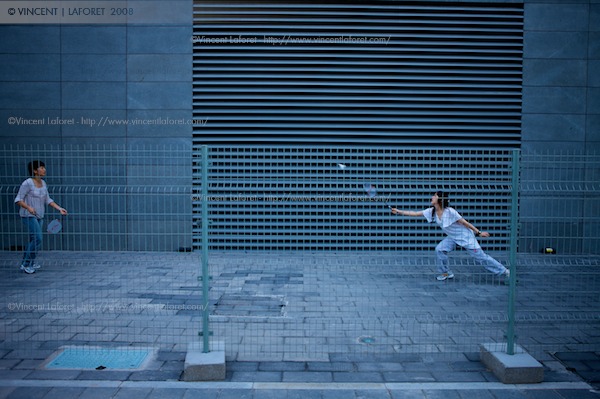
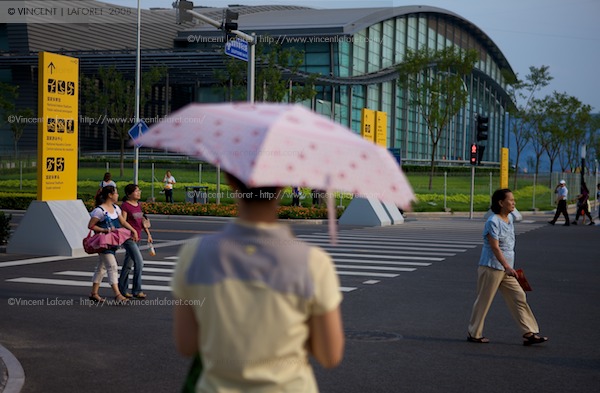
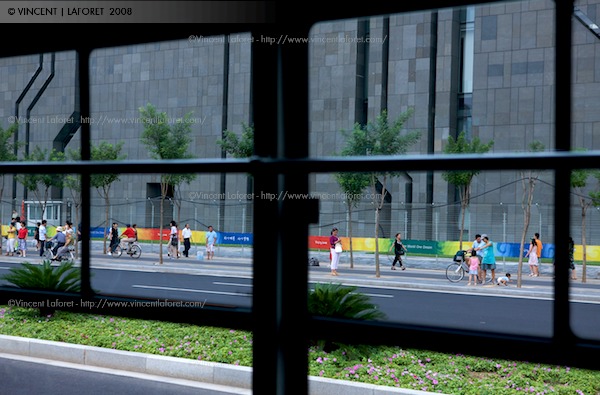

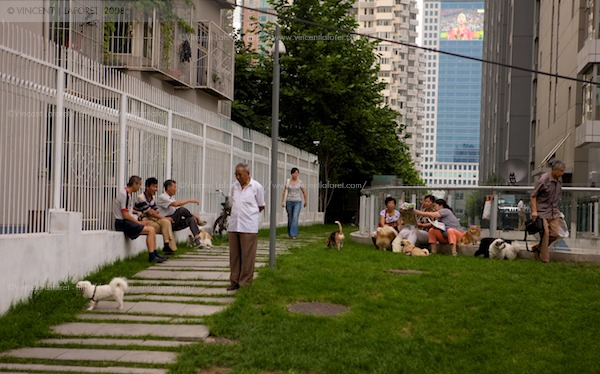
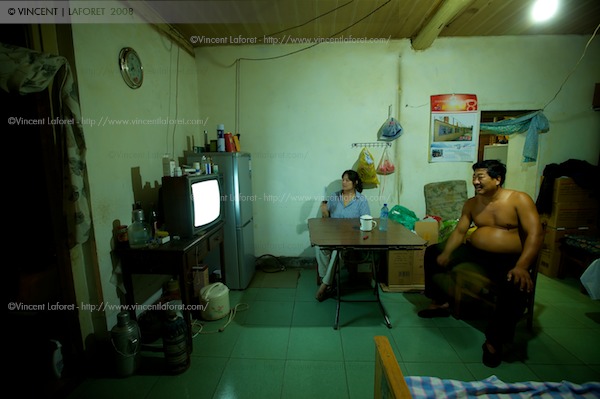
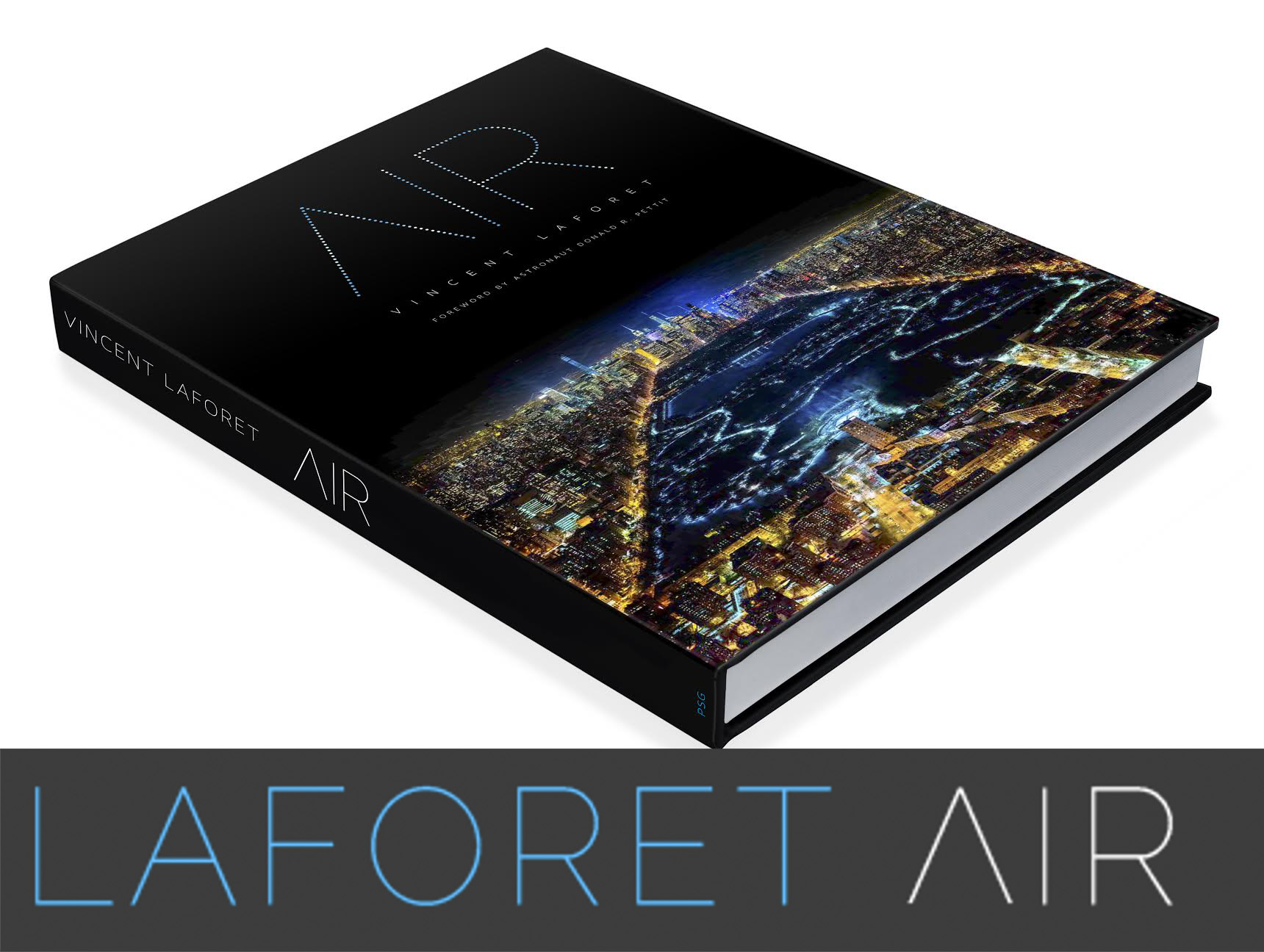
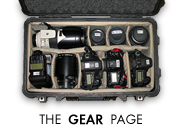

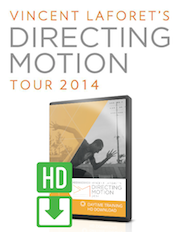
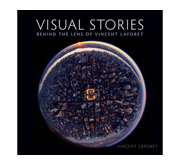







you made ping pong sexy!
Amazing pics.
Very interesting story. It is great to see shots outside Olympic venues. I hope your adventure outside city will have no effect on how the officials treat you through the rest of the Olympic events.
i’ve watched a very nice bbc documentary yesterday made some time before the olympics. the well known bbc repoter (can’t remember the name) travelled through various regions of china with a simple olympics reporter pass. he made it very clear that he was after the problematic stuff, and although the pressure to dissuade him was very obvious he was never “seriously” threatened.
he managed to interview some farmers strongly affected by the olympics and and the wife of a political prisoner who’d allegedly been severely tortured…
he was chased a few times, one of them he told his driver to make a 180 degrees inversion – that’s the classic way to know if you’re really being followed – and after passing them the two suspicious cars also turned back. he then stopped, got out of the car, approached them and knocked on their windows until they drove off.
comparing your situation with this story i really don’t see any reason for you to worry about getting out of the bubble.
The photo with the table tennis players in motion is great. What was the shutter speed that allowed for the moition blur yet still capture the colors of the players uniforms/
There are great recent images around Beijing outside of the Olympics:
Beijing photos
I really enjoy the colder tones of the badminton image.
I also enjoyed your tale of adventure. It’s sad to see how seemingly ashamed China acts about its country now that they are in the public eye. I suppose there will be other times to document the “real China,” but it is sad when you can’t blend in and get the shots you want.
Dick – .3 seconds on the exposure at f/11 – 50 asa – cheers – v
Great story, I love the top table tennis shot!
I’m really enjoying reading your blog. Thank-you for posting. Looking forward to more.
Methinks the spirit of a National Geographic photographer lies within you… 🙂
=Matt=
Consider that the “secret police” were probably regular police in an unmarked car. By no means rare.
@tnd — The trouble, though, about police watching is not a risk to the journalist. It’s as Vincent said: It makes it almost impossible to do (photo)journalism. People know if there are police around, and may be less likely to be open if they know they’re being watched.
great shoot vincent. i like it very much
Good story, shame you couldn’t get the photos you were looking for.
The dash lights in my car are on all the time that the engine is on, whether or not the headlights are on, so it could have just been a normal car. (When I first got the car, without the reminder of being unable to see the dash, I kept forgetting to turn the headlights on).